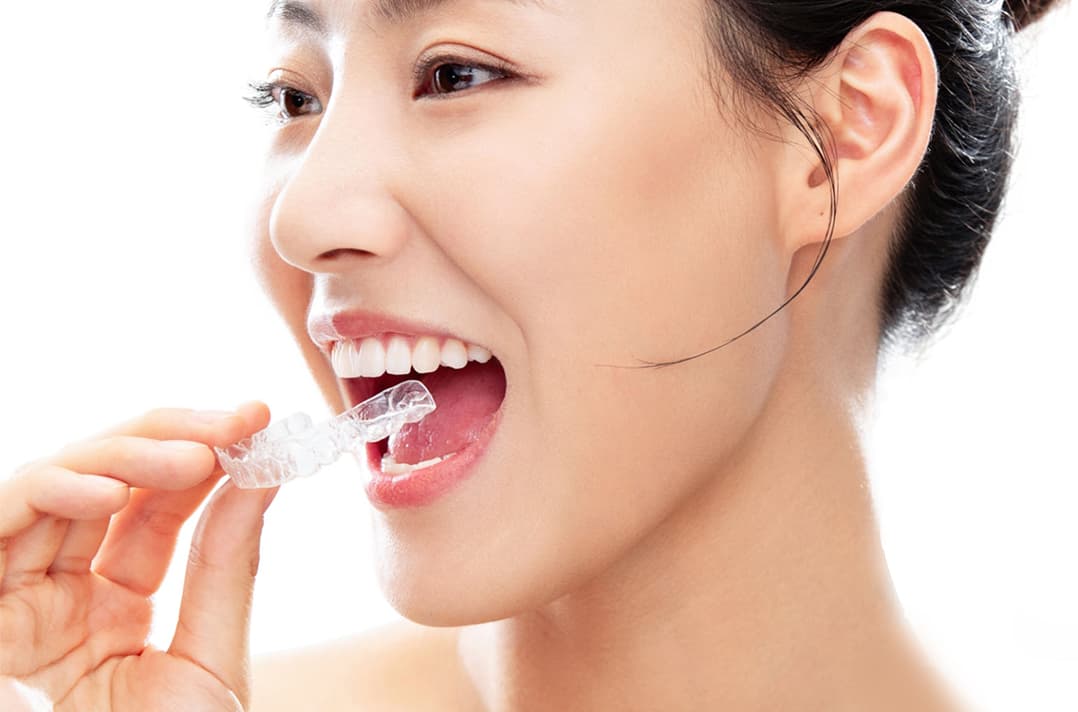TEETH - STRAIGHTENING TREATMENT
SERVICES
RESOURCES
SHOP
MEDICAL CERTIFICATIONS
Certifications ensuring safety, quality, and compliance with global standards.
Certifications ensuring safety, quality, and compliance with global standards.
Invisible braces, also known as clear braces, are discreet orthodontic solutions designed to straighten teeth without the noticeable appearance of traditional braces. These aligners are crafted from transparent materials, offering a subtle and nearly invisible way to address orthodontic issues.
However, before making any decisions affecting your teeth, there are essential factors to consider. Just like any decision-making process, it’s crucial to be well-informed before taking action.

Before considering invisible braces (also commonly referred to as clear aligners), it is essential to evaluate your eligibility. These aligners are designed for individuals with mild to moderate dental concerns; however, suitability varies for each person. To determine your eligibility, it is recommended to undergo an online consultation. This step allows for a personalised assessment, ensuring that your orthodontic treatment aligns with your unique needs and conditions.
To achieve your brand-new smile, some commitment on your part will be necessary. The majority of this commitment involves the time spent wearing the aligners. Clear aligners are meant to be worn for 20-22 hours each day, so you’ll need to get accustomed to having something in your mouth. That being said, they still offer more comfort than traditional braces.
As highlighted earlier, the recommended minimum duration for wearing your aligners is 20-22 hours daily. The remaining hours are reserved for mealtimes. While it might seem a bit challenging at first, you’ll quickly become accustomed to putting on and taking off your aligners, making it second nature. Don’t worry; you can still drink water with them, just avoid hot water.

While using clear aligners, maintaining optimal oral health is crucial, as aligners may become stained or dirty. It’s essential to adhere to a strict oral hygiene regimen to prevent issues such as cavities and gum disease during treatment. This ensures the effectiveness of the aligners and contributes to overall dental well-being.
Before being fitted with aligners, additional procedures such as Interproximal Reduction (IPR), attachments, or extractions may be necessary. These preparatory steps help optimize the alignment process and ensure the best possible outcome.
Adjusting to wearing aligners may take some time, and you might experience a temporary change in speech, potentially developing a slight lisp or noticing a different sound when speaking initially. This is a normal part of the adaptation process, and it typically improves over time as you become more accustomed to wearing the aligners.

To maintain the results achieved during your aligner treatment and prevent any potential shifting of your teeth, the use of retainers is important. Retainers play a crucial role in preserving the alignment achieved. It’s recommended to follow your orthodontist’s guidance on retainer usage for optimal post-treatment results.
Now that you’ve learned about the essential considerations, let’s go over some of the reasons for choosing invisible aligners. These include their clear look, ease of removal, comfort, and quicker treatment times when compared to traditional metal braces. If you’re thinking about getting clear aligners, these advantages make them an appealing option for creating the smile you want.
For a concise recap, consider these key points to enhance your understanding of invisible braces:
If you’re prepared to embark on your clear braces journey, initiate the process by getting your complimentary online consultation. This initial step allows you to explore your options and get started with personalized guidance tailored to your dental needs.
Get a free consultation with your orthodontist today to explore your options and take the first step towards achieving the smile of your dreams. Your journey to a confident smile starts now!
As we celebrate 5 years of transforming smiles, we’re saying thank you in the best way we know how—with gifts! ...
3 July 2025
Getting braces is a major step toward achieving a straighter, healthier smile—but if your orthodontist says you might need to ...
8 May 2025
Bad breath (halitosis) is a common but frustrating condition that can affect confidence and social interactions. In many cases, brushing ...
7 May 2025
An overbite is a common dental condition where the upper front teeth overlap the lower front teeth. While a slight ...
7 March 2025
Recovering from a tooth extraction is easier with proper post-teeth removal care. Mild swelling, bleeding, and discomfort are normal but ...
27 February 2025

